Man walks into a pub – or is it a bar? Is there a difference? Can you walk into any outlet for the retail of alcoholic refreshment on the premises and declare immediately, without discussion, disagreement or deviation: “This is a pub, not a bar!” or, conversely and contrariwise, “This is a bar, not a pub!” Is it possible to draw a line and say: “Everything this side is a pub, and everything that side is a bar“?
If you think this is a meaningless distinction, let me ask you this: does the idea of a list of Britain’s ten best pubs suggest something rather different from a list of Britain’s ten best bars? Would you expect those two lists to be identical? I don’t believe you would.
Note that little of what follows is relevant to anywhere outside Britain, and even in Scotland the line between a pub and a bar will be drawn rather differently, I suspect, than in England and Wales.
All the same, in Britain, I propose, pubs are different to bars, even if, on a Venn diagram, we might see considerable overlap. But how are they different, exactly? We’re not helped much if we try to drag the dictionaries into this argument. The OED defines “pub” as “a building whose principal business is the sale of alcoholic drinks to be consumed on the premises”, and “bar” (in the sense larger than merely “counter”) as “an establishment where alcohol and sometimes other refreshments are served.” There’s a small clue as to possible differences between pubs and bars in those almost identical definitions: a pub is “a building”, a bar “an establishment”, hinting that a bar as a separate business need not be occupying the whole of the building in which it is found. But Merriam-Webster, giving an admittedly transatlantic take on the meanings of the two words, refuses to be quite so nice: a “pub”, it says, is “an establishment where alcoholic beverages are sold and consumed”, a “bar” is “a room or establishment where alcoholic drinks and sometimes food are served”. OK, it looks as if the heirs of Noah Webster think a pub can’t be just a room, though a bar can be: but they seem to allow that a pub does not have to be a separate building. Apart from that, little difference.
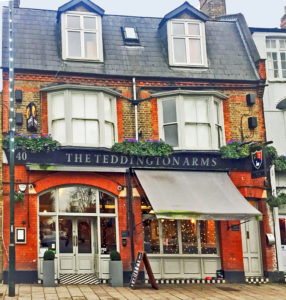
To me, however, there is one simple test that will tell you probably 90 per cent of the time whether you are in a pub or a bar as soon as you walk through the door: where is the counter at which you stand to be served? If it’s in front of you, against the far wall, you’re in a pub. If it’s to the left or right of the entrance, at right-angles to the front of the building, you’re probably in a bar. This basic difference springs from the different origins of pubs and bars. Pubs come from the “dwelling house” tradition, where the building, often originally someone’s home, is likely to be shallower in depth than it is wide, and the longest orientation is parallel with the road or street. Thus to maximise the length of the serving area, the bar-counter runs across the back. Bars come from the “shop” tradition, where the building is more often deeper than it is wide, to maximise the number of frontages along the street. Thus the greatest length of bar-counter is achieved by running it down one of the side walls.
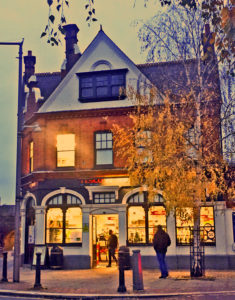
Of course, there are very many occasions when you’ll know without having to think very hard whether you’re drinking in a pub or a bar: if it’s a stand-alone building that looks as if, without much alteration, it could be turned into a home, it’s a pub. If it’s in a shopping parade, it has huge plate-class windows and it could easily be turned into a Starbucks or Costa, it’s a bar. But the rise of the micropub movement means it’s now less easy to declare definitively: “Pubs are descended from houses, bars are descended from shops.” Many micropubs have been converted from disused shops. Should we call them “microbars” instead? And come to that, many disused pubs, most of them stand-alone, have been converted into shops.
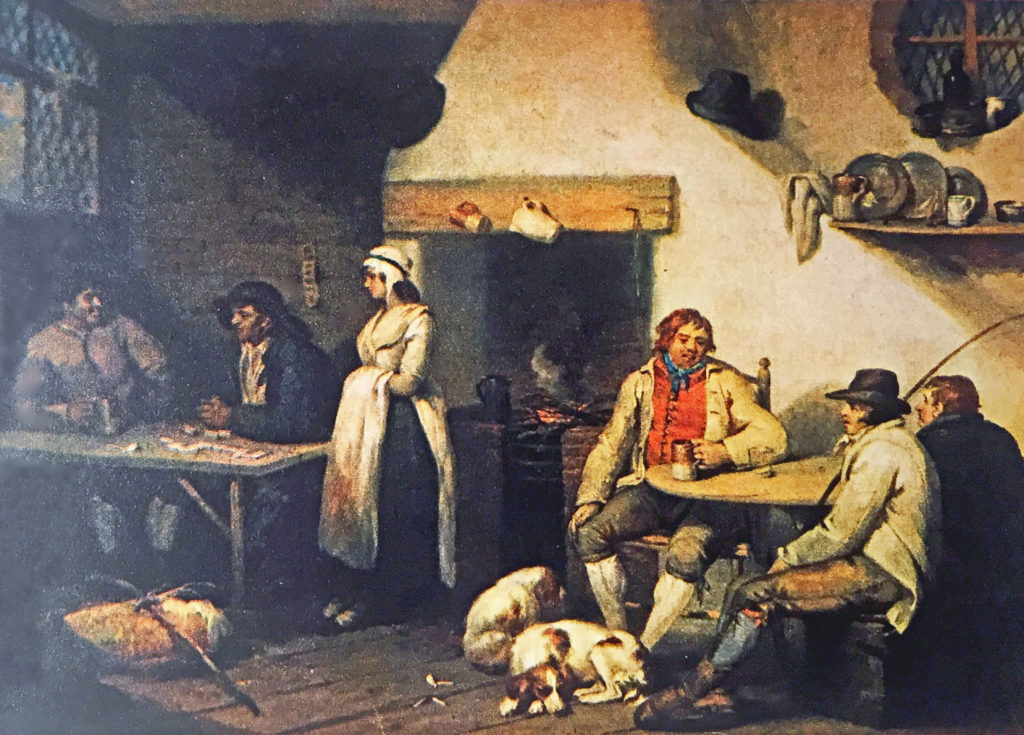
Not that it’s entirely true to say without elaboration that “pubs are descended from homes”. The pub as we know it today is essentially of 19th century origins, born of a four-way mating between the alehouse (strictly for locals and regulars; mostly working class; mostly rural/semi-rural, or backstreet urban; most likely to have started as somebody’s private home), the gin palace (strictly urban; showy; for both locals and strangers, working class and middle class; most likely to have been deliberately built as an outlet for drinking by a developer or entrepreneur), the tavern (High Street urban; middle class; food-oriented; original uses varying from drinking outlets attached to religious establishments to cookshops to wine retailers) and the inn (rural or urban; on a main road; mostly for travellers and occasional visitors; food important; origins in farmhouses, if rural, and private homes, if urban).
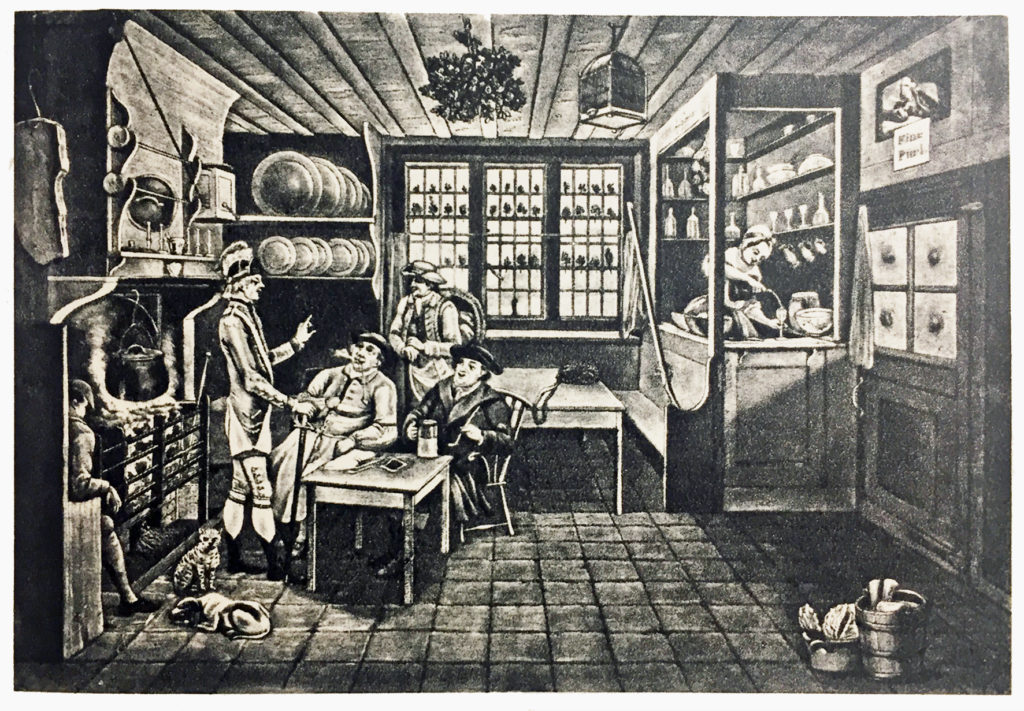
Pubs developed to cater for a broad swath of society but still, until the 1970s, kept a strict class divide between different parts of the same building, with different rooms for different social groups, so that the working class, those who had earlier gone to the alehouse would now frequent the public bar, while middle-class drinkers, those who would once have drunk in the tavern, had taken up seats or stools in the saloon bar. But with this amalgam of different traditions, the pub architect Ben Davis said in 1961, arrived what he called “pubness”. Three of the elements of “pubness”, Davis suggested, came from the inn: a home-like character; a personal sense of welcome; a sense of permanence and continuity. Two, Davis said, came from the tavern: “an accent on good-fellowship”, by which he meant, I think, something folded into the concept the Irish spell “craic”, the idea that taverns (and pubs) are places for conversation and the enjoyment of others’ company; and “a decided affinity with Christian traditions and principles”.
Though I was brought up going to Sunday School, and with hymn singing and prayers every term-time morning before classes for 13 years of primary and secondary education, I’m not entirely sure what Davis was trying to say here: possibly that every man is equal in the eyes of the (land)lord, more likely that in the tavern (and pub) all should strive to follow the Golden Rule (the name of an excellent hostelry in Ambleside, Cumbria), that is, treat others as you would wish to be treated: “Love thy neighbour as thyself.” Acknowledge your fellow pub-goer’s right to space, to consideration, and to get served at the bar before you if he was there first.
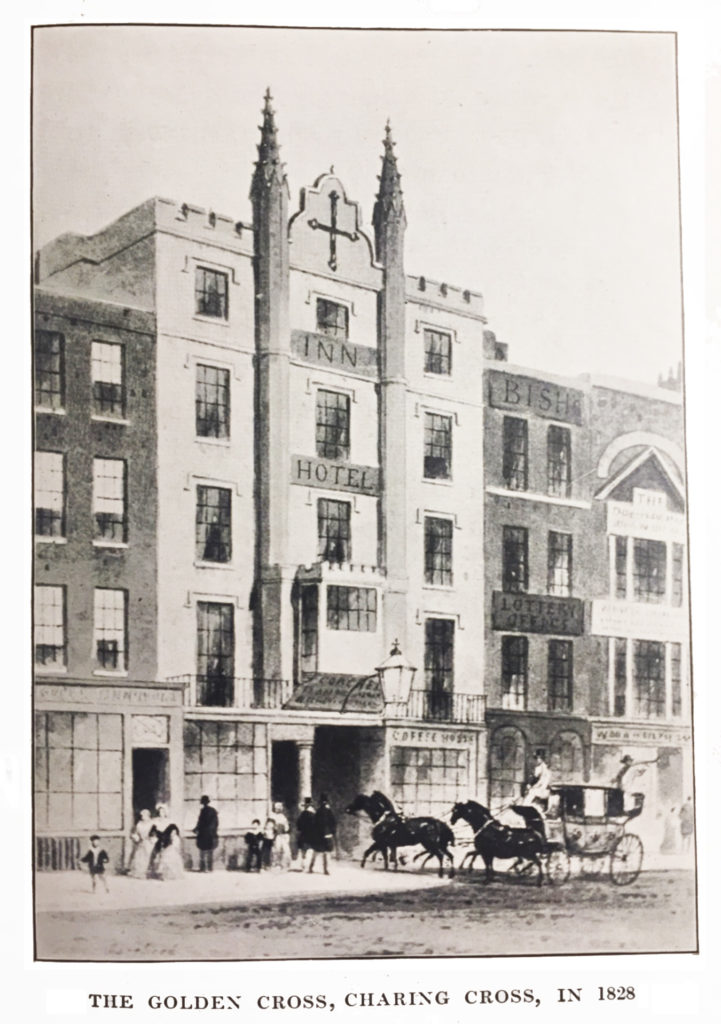
Are there any of those elements of “pubness” you won’t find in a bar? It would be a very poor bar that did not have an atmosphere that included a sense of welcome and “good-fellowship”, and which oozed hostility between drinkers. But while “a sense of permanence and continuity” is not at all essential in a bar, it helps make a pub feel like a “proper” pub: the reason why the Jerusalem Tavern in Clerkenwell is so popular is because, although it is only 22 years old, it looks inside and out like a genuine 18th century establishment. (The serving bar at the Jerusalem Tavern, as it happens, is at right-angles to the street, just to show me up.) In the New Town where I grew up, all the estate pubs had been built to look like New Town homes on steroids, following the “pub as a home from home” idea, but their newness stripped them of any of the “sense of permanence and continuity” that all the pubs in the Old Town had dripping from every brick and beam, and they felt like zombie pubs, lifeless and without character. A bar, in contrast, never feels “homey”: indeed, I’d suggest that the slightest pinch, jot or iota of “a home-like character” turns a bar into either a pub or a teashop.
Pubs have regulars; bars only have customers, generally. Bars have owners, or managers; pubs can have managers, but they are often better when they have landlords, publicans or tenants, names that suggest a more proprietorial relationship with the establishment. Bars are run by people called Kenton; pubs are run by people called Sid (although this can change). Pubs have dartboards, meat raffles and piles of coins stacked up on the bar that will be pushed over by a minor celebrity one well-attended evening just before Christmas, to raise money for a local charity: these are part of “pubness” because pubs are rooted in communities in a way bars are not. Bars are places you call in to on your way home from work; pubs are places you go out to after you’ve got home from work.
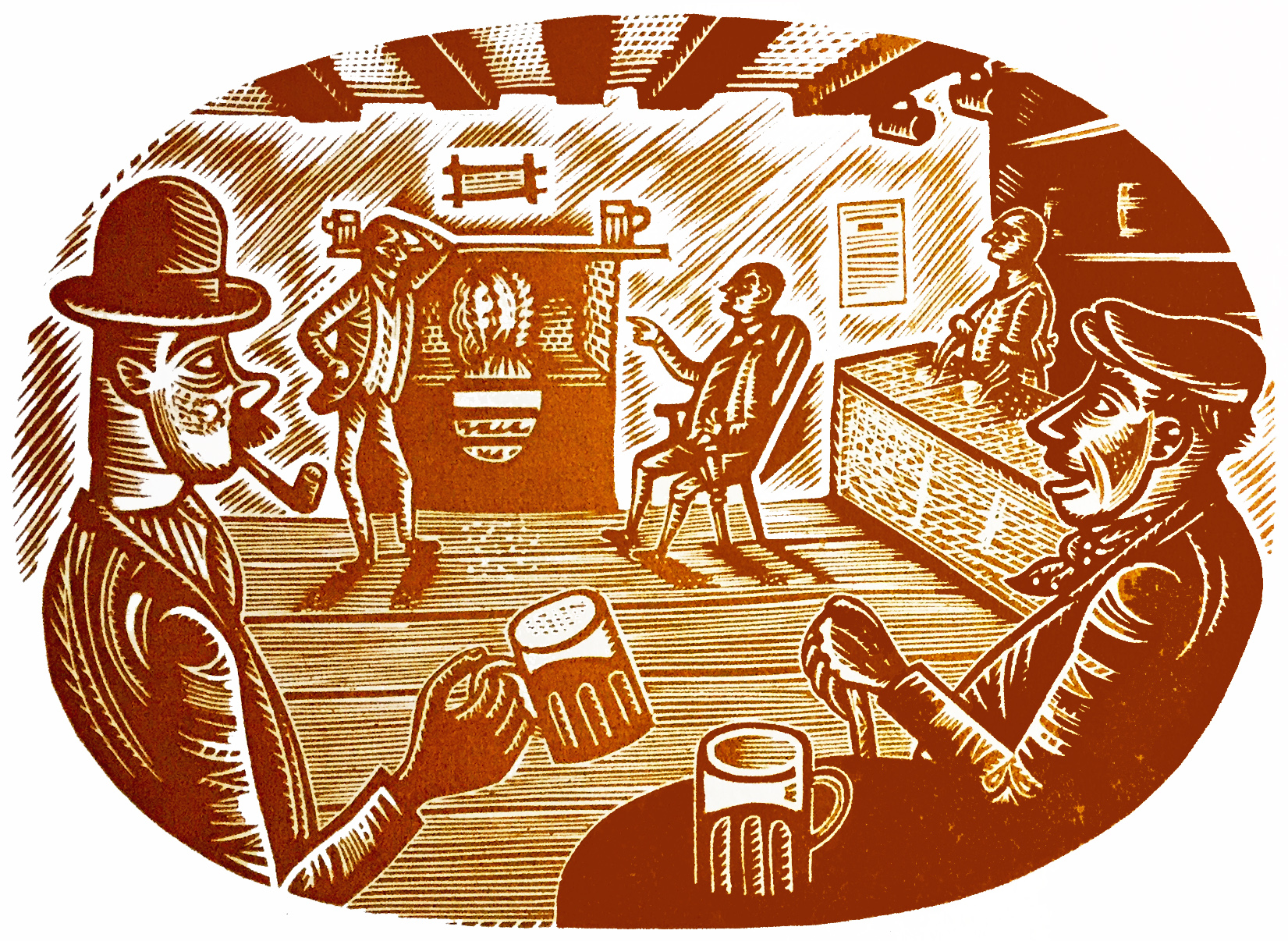

The difference is a hard one to define exactly, but, as with many other things, in the vast majority of cases you know one when you see one.
One that usually holds true is that a pub is a building in its own right that makes use of its upper floors, whereas a bar may well be only a ground-floor unit in a larger building.
Also a pub is something that endures through changes of ownership and licensee, whereas a bar is very much defined by its current trading format.
Do you not listen to The Archers?
The Bull is run by Kenton and has the longest continuity of any broadcast fictional pub.
Yes, I do listen to the Archers. Kenton used to run a wine bar. Sid used to run the Bull, until he died.
Oh yes, Kenton’s wine bar.
Do you think the Bull has a bar parallel to the road outside? In my mind it does.
I’d be astonished if it didn’t.
Bars sell cocktails, artisanal spirits and the better sort of wine. Their clientele is younger, more prosperous and hairier (at least the men) then pubs.
Your “bar parallel to the road” rule is an interesting thought, but I submit that it would be accurate much less than 90% of the time, and wrong so frequently as to make it unsustainable. Just think of the huge number of pubs with two or more entrances, where even if the bar were facing you from one door, it wouldn’t from the other. To say nothing of the remaining multi-room pubs where the rule falls down entirely.
[…] So what IS the difference between a pub and a bar?In which Martyn Cornell also reminds us pub/bar has a different meaning in the US than the UK. The pub as we know it today is essentially of 19th century origins, born of a four-way mating between the alehouse (strictly for locals and regulars; mostly working class; mostly rural/semi-rural, or backstreet urban; most likely to have started as somebody’s private home), the gin palace (strictly urban; showy; for both locals and strangers, working class and middle class; most likely to have been deliberately built as an outlet for drinking by a developer or entrepreneur), the tavern (High Street urban; middle class; food-oriented; original uses varying from drinking outlets attached to religious establishments to cookshops to wine retailers) and the inn (rural or urban; on a main road; mostly for travellers and occasional visitors; food important; origins in farmhouses, if rural, and private homes, if urban). […]
Great post! I much prefer pubs to bars and it’s good to see an examination of the differences between them.
[…] So what IS the difference between a pub and a bar? In which Martyn Cornell also reminds us pub/bar has a different meaning in the US than the UK. The pub as we know it today is essentially of 19th century origins, born of a four-way mating between the alehouse (strictly for locals and regulars; mostly working class; mostly rural/semi-rural, or backstreet urban; most likely to have started as somebody’s private home), the gin palace (strictly urban; showy; for both locals and strangers, working class and middle class; most likely to have been deliberately built as an outlet for drinking by a developer or entrepreneur), the tavern (High Street urban; middle class; food-oriented; original uses varying from drinking outlets attached to religious establishments to cookshops to wine retailers) and the inn (rural or urban; on a main road; mostly for travellers and occasional visitors; food important; origins in farmhouses, if rural, and private homes, if urban). […]
[…] Martyn Cornell has attempted to tackle the world’s thorniest philosophical conundrum: what’s the difference between a pub and bar? […]
[…] are not surprising, nor are the misconceptions (or at least differing opinions about quality). Like Martyn Cornell’s essay about pubs and bars linked to last week the difference between UK and US beer cultures is on […]
When did the word pub really become commonplace? Dickens always references them as ‘public-houses’ in his stories, which puzzled me for some time, since I am from the continent.
An interesting question: Google’s ” rel=”noopener” target=”_blank”>NGram viewer suggests “pub” was always more popular but only really took off from the 1860s: however, I suspect there’s some sort of artefact distortion going on there. More investigation needed.
[…] ту сторону — бар»? На тему разницы между пабом и баром рассуждает блога Zythophile Мартин Корнелл. Pivo.by публикует перевод […]
[…] Статья переведена с источника Zythophile. […]
One thing you mentioned, and yet neglected to mention, is that a pub can contain bars (the public and saloon bars you mentioned), but a bar seldom contains more than one bar, though a nightclub may well also contain several bars.
I find the dictionary distinctions, particularly on the matter of the serving of food, to be weird. I would’ve said that food was relatively unusual in bars (and more often of the snack variety) but very common in pubs (especially gastro pubs, as the name indirectly suggests).
On the whole, I found this article very interesting, but I really have to disagree with the last sentence. I think stopping in at the pub on the way home (albeit probably in the saloon bar) used to be pretty common and heading out to a bar (or several) on a night out still is.
“a bar seldom contains more than one bar” true, indeed, but fewer and fewer pubs contain more than one bar today – the elimination of the multi-bar pub is one of the trends of the past 50 years.
“I would’ve said that food was relatively unusual in bars … but very common in pubs” – I would’ve said you were completely wrong. But without actual figures, I won’t be sworn to that …
” I think stopping in at the pub on the way home (albeit probably in the saloon bar) used to be pretty common and heading out to a bar (or several) on a night out still is.” Both those things happen, but the tendency, I suggest, is for pubs to be more the going-out destination, bars to be the on-the-way home call.
[…] Источник: Zythophile […]
Here in Ireland there is, perhaps, a clearer distinction between the concept of a bar and pub. In the first instance the overall building is historically referred to as the pub. Traditionally the Irish pub was a rudimentary affair . In the cities this changed with the arrival of the more ornate and sophisticated pubs of the Victorian period. At this point a smaller area at the entrance of the building started to be hived off as a bar, the preserve of men only. Further back in the building there tended to be a more comfortable area which came to be referred to as the lounge, over time. Here both men and women were welcome. The late 1960s and 1970s saw a shift across the nation to what were referred to as Lounge Bars. These were nothing like the elaborate lounges of the high victorian establishments in the cities but they did offer a level of comfort in the lounge area previously unknown in the pubs of Ireland. The stimulus for the development of such lounges was a combination of factors including increasing prosperity, a revival of interest in live music and the necessity to provide comfort female clients who were coming to pubs in greater numbers. The bar at the front remained the preserve of the hard drinking males with no music. This was the general trend and there were and are some variations. There are still establishments up and down Ireland which are rudimentary spaces with no division between bar and lounge. Thank god for this. Then there are wine bars but thankfully they died roaring.
Kevin Martin
Author of ‘Have Ye No Homes To Go To? The History of the Irish Pub’ and ‘The Complete Guide to Dublin Pubs’
Thank you for that, Kevin: I deliberately left Ireland out of the discussion, because the Irish pub and its history is, as you say, different in many ways from the history of the pub in other parts of these islands, not least because Ireland never had the ban on grocery stores having on-premises drinking.
Actually the Spirit Grocer licences, as they were called, did not permit drinking on the premises. The intention of the licences was, supposedly, to reduce public inebriation whereby people would buy legal alcohol and take it home. That was the stated intention but it really was a tax grabbing exercise by the authorities. Like many other laws pertaining to public houses they were simply ignored and the authorities gave up trying to police them. The law was later changed.
[…] https://zythophile.co.uk/2018/12/08/so-what-is-the-difference-between-a-pub-and-a-bar/ […]